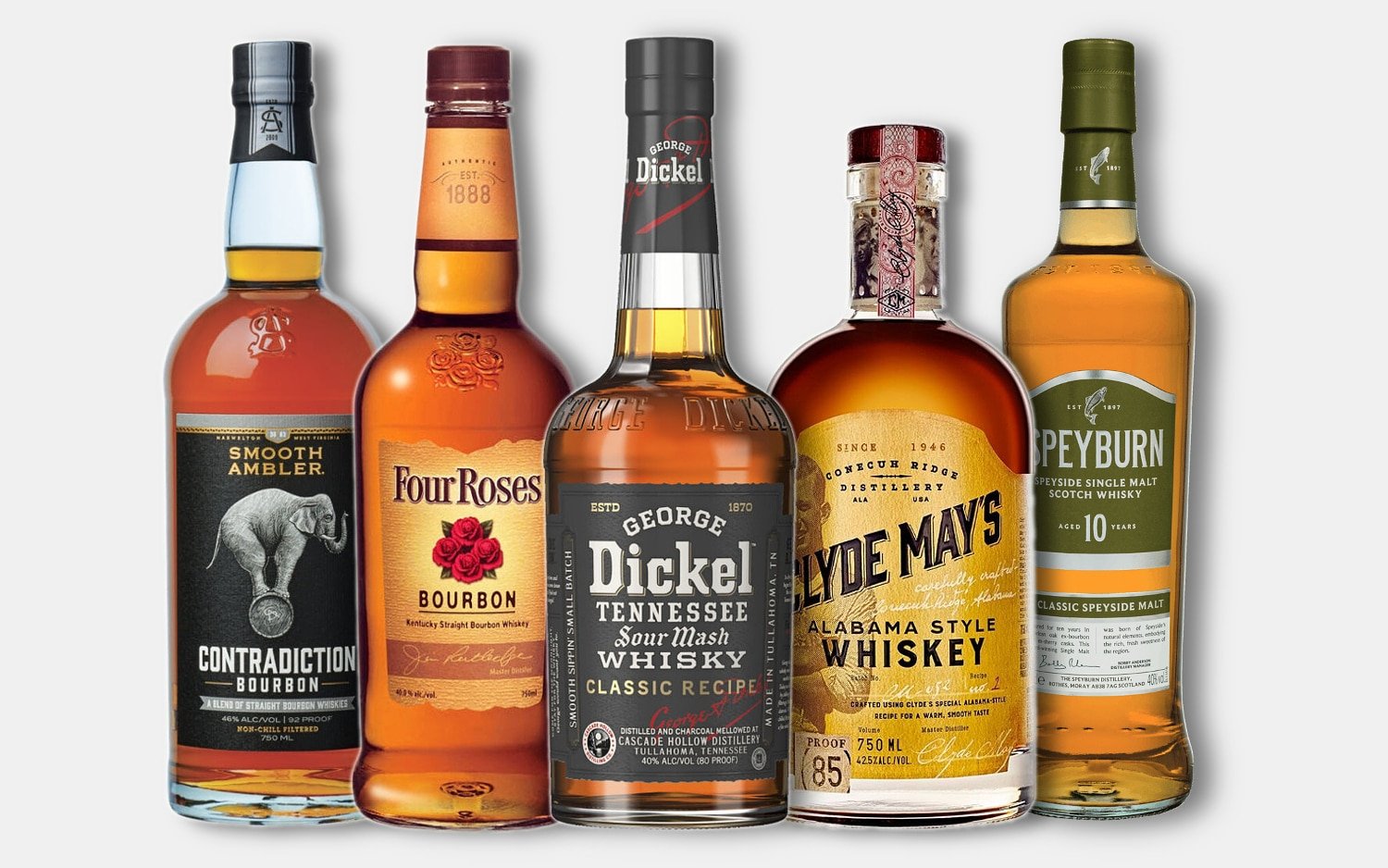The Negroni: It’s a classic that separates the casual drinker from the true cocktail connoisseur. It’s surprisingly easy to make, but fiendishly difficult to master. And it’s probably named after an Italian gentleman named Camillo Negroni—who may have been a Count, but could just as easily have been a cowboy, banker, or famed riverboat gambler.
No matter which way you slice it, the Negroni is a beautiful drink for anyone with a taste for the bitter stuff. And today, I’d like to walk you through three ways of making a Negroni—a refined take on the classic, a modern interpretation called the White Negroni, and a Caribbean-inflected Kingston Negroni for good measure.

The Classic Negroni
At its most basic, the Negroni is composed of equal parts of three alcoholic ingredients: Gin, sweet vermouth, and Campari. Stir all of those over ice in a big rocks glass, garnish it with a citrus twist, and you’re good to go.
But exactly which gin and vermouth you use here will make or break your experience of the drink.
A London Dry Gin like Beefeater is always a standby for the Negroni, as its punchy juniper-forward aroma can stand up to the bitterness of Campari. But if you’re not as much of a fan of the Christmas tree aromas, go for a softer gin like Hayman’s Old Tom instead.
In my mind, there’s one sweet vermouth that is most reliable for a Negroni: Cocchi’s Vermouth di Torino. It’s sweet but not too sweet; bitter but not too bitter; and has a complex flavor profile that pairs well with just about any gin. If you’re big on bitter flavors though, upgrade to Carpano’s Punt E Mes vermouth, which is one-and-a-half times as bitter as a standard sweet vermouth.
And for the Campari? There’s no real substitute for it in a classic Negroni. In the next recipe, however, we’ll explore a different Italian amaro, or bitter liqueur, in place of the beetle-red Campari.

The White Negroni
Of all the wonderful things that the classic Negroni is, it’s far from being a light drink. And when spring and summer roll around, my mind heads straight for the drink’s lighter and brighter sibling: The White Negroni.
A modern classic cocktail with dozens of recipe variations to its name, the White Negroni centers around replacing the rich red Campari with a brighter and more herbal French bitter liqueur called Suze. Suze is lighter both in color and flavor than Campari, and gives more room for the cocktail’s main spirit—usually gin—to stand out.
Alongside Suze you’ll also need a white, or blanc, vermouth. Dolin Blanc Vermouth is a light, friendly, and affordable solution here, while Cocchi Americano provides more bitterness and citrus-peel punch.
Feel free to play with your base spirit here—gin, bourbon, rye, and tequila all work well—but keep the ratio at equal parts to maintain the integrity of the drink.

The Kingston Negroni
New York City cocktail veteran Joaquín Simó came up with this rummy and powerful variation of the classic Negroni back in 2009, and it’s been a favorite of hard-drinking craft cocktail bartenders ever since.
The star of the show here is Smith & Cross Traditional Jamaican Rum. Bottled at 114 proof, it’s a heavy-handed hitter of a spirit, bursting at the seams with tropical fruit and spice flavors under a coat of caramel and molasses sweetness.
To temper the fire of Smith & Cross, Simó goes for an equally robust sweet vermouth: Carpano Antica Formula, a rich and dessert-like vermouth with heavy notes of vanilla.
This is one of the few Negroni variations where Campari almost blends into the background rather than dominating the stage, providing a pleasant bitterness that rumbles with the sweet Jamaican heat of the rum.
Garnish the Kingston Negroni with an orange twist to bring out all of its ingredients’ citrus notes—or a flamed one if you’re feeling fancy and want more caramelized sweetness on the finish.
Conclusion: A Word of Warning
Before I go, a final caution: Once you start to realize how easy Negronis are to make and enjoy, and how many variations you can come up with on the fly, you may find them going down too easy. They’re a surprisingly alcoholic drink, so please be sure to pace yourself—or be prepared for a slow morning the next day.
Disclosure: Clicking on these links and making a purchase may earn us a small referral fee, at no extra cost to you. Learn more here.


